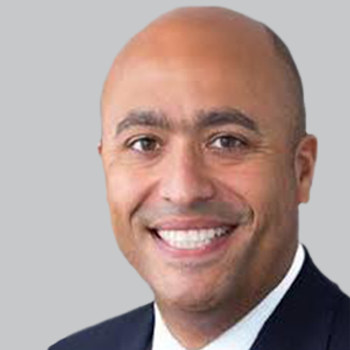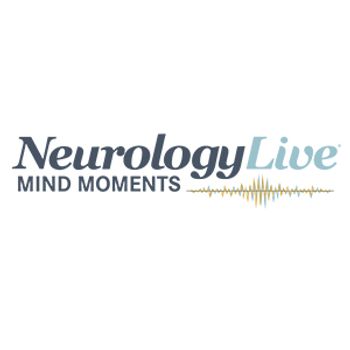
MedRhythms’ digital therapeutic platform serves as a digitized version of rhythmic auditory stimulation that is sensor-automated and music-based.

Matt Hoffman, Editorial Director for NeurologyLive, has covered medical news for MJH Life Sciences, NeurologyLive’s parent company, since 2017. He executive produces the NeurologyLive Mind Moments® podcast, and hosted the Medical World News show Deep Dive. Follow him on Twitter @byMattHoffman or email him at [email protected]

MedRhythms’ digital therapeutic platform serves as a digitized version of rhythmic auditory stimulation that is sensor-automated and music-based.

The data, from the phase 3 COMET trial, will be the basis for global regulatory submissions in the second half of 2020, according to manufacturer Sanofi.

The recently approved Allergan agent reported lower rates of functional disability and better overall satisfaction with treatment, as well as similar success for those who did not experience efficacy with triptans.

Data presented at AHS 2020 suggest that 170-mg oral atogepant (Allergan) was both safe and well-tolerated, setting the stage the continued development in migraine prevention.

Data from a pair of phase 3 studies suggest that the recently approved celecoxib oral solution (Elyxyb; Dr. Reddy’s Laboratories) offers safe and effective acute treatment of episodic migraine.

Results from the CHAMP trial of adolescents and children with migraine add to the already active and ongoing discussion surrounding the use of preventives in this population.

Further studies are needed to confirm the additional reductions in monthly headache days observed in patients with migraine who were treated with onabotulinumtoxinA and an add-on CGRP agent.

The device will now be available with prescription through Azova’s Collaborative Clinical Care Platform for those with migraine.

Ahead of sessions kicking off on June 13, Jessica Ailani, MD, FAHS, offers a look into what data, plenary talks, and developments are set to be presented at the upcoming AHS 2020 annual meeting.

Despite the likelihood of women receiving IV thrombolysis still being 13% lower than men, the gap narrowed by 17% from 2008 to 2018 compared to what was observed from 2000 to 2008.

The new data from the phase 2 NURTURE study are set to be presented at the virtual Cure SMA Research and Clinical Care Meeting.

Results of the Jackson Heart Study suggest that cigarette smoking is linked with a dose-dependent higher risk of all stroke in black individuals compared to those who did not smoke.

Data show the therapy’s positive safety and expression results from a small number of clinical trial participants with limb-girdle muscular dystrophy type 2E out to 1 year.

After respective approvals in December 2019 and March 2020, lemborexant (Dayvigo; Eisai) and ozanimod (Zeposia; Bristol Myers Squibb) have become available for patients with insomnia and multiple sclerosis.

The founding executive director and chief science officer of the Alzheimer’s Drug Discovery Foundation discussed the recent approval of the imaging agent flortaucipir F18.

The Adamas Pharmaceuticals agent has a PDUFA action date of February 1, 2021, as a treatment for off episodes in patients with Parkinson disease who are receiving levodopa-based therapy.

"Mind Moments," a podcast from NeurologyLive, brings you an exclusive interview with Shadi Yaghi, MD.

The GERA-US study assessed societal costs associated with MCI and mild dementia, and caring for someone with Alzheimer disease, and was the first such study to show how the early stages of cognitive decline economically impact both patients and their caregivers.

Post-hoc data presented at the EAN Congress suggest patients with dyskinesia prior to starting treatment on the Kyowa Kirin agent were more likely to experience dyskinesia as an adverse event during treatment.

The professor and head of the department of neurology at the University of Minnesota spoke to the recent findings of a study of Boston Scientific's multiple independent contact current-controlled device for deep brain stimulation.

The study authors noted that the findings suggest that integrating a cost-effective and safe intervention such as yoga into the management of migraine would be beneficial.

The vice president of Global Program Leadership in Neurology and Immunology at EMD Serono discussed the recent long-term phase 2 data on evobrutinib presented at CMSC 2020.

From post-implantation screening to 3 months, those in the active treatment arm reported a mean improvement of 3.03 more hours of on time than the control group with Boston Scientific’s deep brain stimulation device.

An analysis of data from the phase 3 development of cladribine (Mavenclad; EMD Serono) showed that the incidence of treatment-emergent adverse events was low and most were mild in intensity.

Marketed as Tauvid by Avid Radiopharmaceuticals, the flortaucipir F18 IV injection is indicated to be used with PET imaging to assess the distribution and density of aggregated tau neurofibrillary tangles.

Findings from a study of more than 500 girls with multiple sclerosis suggest that first menstruation and the onset of puberty may be a time of increased disease activity in pediatric MS.

A real-world survey of more than 300 health care practitioners suggests that the MSProDiscuss tool offers a useful tool for the physician-patient discussion on multiple sclerosis disease progression.

Evobrutinib, a highly selective BTK inhibitor for the treatment of relapsing multiple sclerosis, showed long-term safety and success in reducing annualized relapse rates.

Novartis’s anti-CD20 monoclonal antibody has been shown to increase the odds of patients with multiple sclerosis achieving no evidence of disease activity status by more than 3-fold in the first year and more than 8-fold in the second year.

The data included more than 2000 brains and approximately 400 cerebrospinal fluid samples, and showed that a protein network module linked to glucose metabolism was also elevated in cerebrospinal fluid in early stages of the disease.